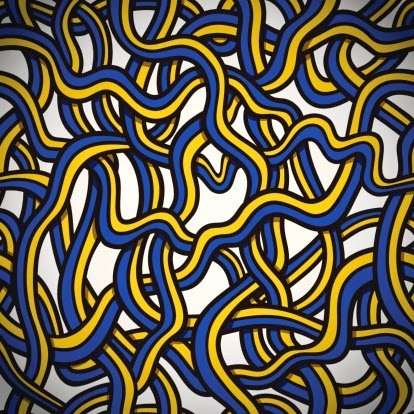Pearl Zhu's Blog, page 1465
December 26, 2014
Optimistic vs. Pessimistic Mind
“Can Do” or “Can’t Do” attitudes are the states of mind.
 An optimistic mind sees the sunny side of the things and the world; a pessimistic mind sees the dark side of the things and the world; there’s nothing absolutely right or wrong with both types of minds, but it is optimistic mind pushes the world moving forward, and makes the life progressive.
An optimistic mind sees the sunny side of the things and the world; a pessimistic mind sees the dark side of the things and the world; there’s nothing absolutely right or wrong with both types of minds, but it is optimistic mind pushes the world moving forward, and makes the life progressive.
Optimism is like the gas pedal, and pessimism is like the brake pad. Optimism is built on a positive perception or a belief linked to one’s expectations some of which may take time to turn into the reality . However, people do also develop a leaning towards a pessimistic bias and although both are states of mind, they are probably separate, but are related constructs. Our gene/environment interaction drives our behaviors whilst cognitive development enables us to separate ourselves from the immediacy of a situation and think. People with optimistic mind are better motivated to proactively pursue the goals, and set higher expectation; like the gas pedal, to accelerate the speed; while people who have learnt to be more pessimistic tend not to think but react at work if the culture of the organization tends to be more command and control with over-controlling leaders then it will both cause and reinforce. Like a brake pad, the pessimistic mind can keep you cautious, but shouldn't stop you from moving on.
The cautious optimism is the positive attitude to push the life and world forward. One’s optimistic bias tends to dominate particularly during those early years as we are constantly driven to try new things. Many of us start out in life with 'glass half full' attitude; It is those early years when are learning by doing increases at a spectacular rate. Many of us continually see the world in a positive way throughout life. And then, life experiences - setback, tragedies, travesties, hardships, obstacles etc, all condition our minds to fear adversities. Apprehensions take over optimism, and we learn to visualize the dark side of the moon. The blindly optimistic mind is perhaps due to the “luck” or plentifulness without tasting of failures. But at the ultimate level, the conscious optimism is that you feel strong connection with nature even if you are in the hardship or hitting roadblocks via the journey to the destination you set in advance, and you can still keep the cautiously optimistic attitude which keeps you energized and motivated to continually fill out the water to make the glass full in an elegant way.
 “Can Do” or “Can’t Do” attitudes are the states of mind. An optimistic mind develops a “Can Do” attitude, because the brain is more malleable than we think and anyone can learn to change to a growth mindset. If add a healthy dose of caution and keep laser focus, it is a positive digital mind which keeps the world flow and “make impossible possible.” Many people have a scarcity mentality and see the negative in everything or simply automatically see the logical fact that half of the space in the glass isn't filled. It is half empty.... ....different reaction for different folks on different days. A pessimist will attribute most things as likely to go wrong, some of which may be down to the individual who has learnt to be helpless, and develops a ‘Can’t Do’ attitude with a sense of being out of control. Other people with a negative view of the world will always find someone else to blame. They behave in a way that prevents them being at risk by adopting a defensive, ‘Won’t Do’ attitude by over-controlling what they can. If anything does go right in their negative world they put it down to luck. This is one of the reasons most change programs at work fail.
“Can Do” or “Can’t Do” attitudes are the states of mind. An optimistic mind develops a “Can Do” attitude, because the brain is more malleable than we think and anyone can learn to change to a growth mindset. If add a healthy dose of caution and keep laser focus, it is a positive digital mind which keeps the world flow and “make impossible possible.” Many people have a scarcity mentality and see the negative in everything or simply automatically see the logical fact that half of the space in the glass isn't filled. It is half empty.... ....different reaction for different folks on different days. A pessimist will attribute most things as likely to go wrong, some of which may be down to the individual who has learnt to be helpless, and develops a ‘Can’t Do’ attitude with a sense of being out of control. Other people with a negative view of the world will always find someone else to blame. They behave in a way that prevents them being at risk by adopting a defensive, ‘Won’t Do’ attitude by over-controlling what they can. If anything does go right in their negative world they put it down to luck. This is one of the reasons most change programs at work fail.
Breaking your “thinking habit” may takes more than 21 days: Just like an optimistic mind shouldn't act blindly without vision and strategy; a pessimistic mind shouldn't keep static mind, filling with fear and negativity only. How to break your habit to think in a cautiously optimistic way? Gallup's survey - 87% of the global workforce is disengaged - now there are some in there that are functioning, but that only means 13% are holding up the rest. The 21 days to break a habit comes from research by medical institutes on phantom limb syndrome. The research showed that on average it took 21 days for the subconscious mind to be retrained. Breaking a habit can happen much quicker and depends on many things including, purpose, commitment etc. Keep optimistic and positive even the road is not smooth; be cautious, but not overly pessimistic either in good time or bad time.
The cautiously optimistic mind is a digital fit thinking: seeing it half full has a massive difference in mindset, and being capable to make it full is the “Can Do” attitude and aptitude.
Follow us at: @Pearl_Zhu
 An optimistic mind sees the sunny side of the things and the world; a pessimistic mind sees the dark side of the things and the world; there’s nothing absolutely right or wrong with both types of minds, but it is optimistic mind pushes the world moving forward, and makes the life progressive.
An optimistic mind sees the sunny side of the things and the world; a pessimistic mind sees the dark side of the things and the world; there’s nothing absolutely right or wrong with both types of minds, but it is optimistic mind pushes the world moving forward, and makes the life progressive.
Optimism is like the gas pedal, and pessimism is like the brake pad. Optimism is built on a positive perception or a belief linked to one’s expectations some of which may take time to turn into the reality . However, people do also develop a leaning towards a pessimistic bias and although both are states of mind, they are probably separate, but are related constructs. Our gene/environment interaction drives our behaviors whilst cognitive development enables us to separate ourselves from the immediacy of a situation and think. People with optimistic mind are better motivated to proactively pursue the goals, and set higher expectation; like the gas pedal, to accelerate the speed; while people who have learnt to be more pessimistic tend not to think but react at work if the culture of the organization tends to be more command and control with over-controlling leaders then it will both cause and reinforce. Like a brake pad, the pessimistic mind can keep you cautious, but shouldn't stop you from moving on.
The cautious optimism is the positive attitude to push the life and world forward. One’s optimistic bias tends to dominate particularly during those early years as we are constantly driven to try new things. Many of us start out in life with 'glass half full' attitude; It is those early years when are learning by doing increases at a spectacular rate. Many of us continually see the world in a positive way throughout life. And then, life experiences - setback, tragedies, travesties, hardships, obstacles etc, all condition our minds to fear adversities. Apprehensions take over optimism, and we learn to visualize the dark side of the moon. The blindly optimistic mind is perhaps due to the “luck” or plentifulness without tasting of failures. But at the ultimate level, the conscious optimism is that you feel strong connection with nature even if you are in the hardship or hitting roadblocks via the journey to the destination you set in advance, and you can still keep the cautiously optimistic attitude which keeps you energized and motivated to continually fill out the water to make the glass full in an elegant way.
 “Can Do” or “Can’t Do” attitudes are the states of mind. An optimistic mind develops a “Can Do” attitude, because the brain is more malleable than we think and anyone can learn to change to a growth mindset. If add a healthy dose of caution and keep laser focus, it is a positive digital mind which keeps the world flow and “make impossible possible.” Many people have a scarcity mentality and see the negative in everything or simply automatically see the logical fact that half of the space in the glass isn't filled. It is half empty.... ....different reaction for different folks on different days. A pessimist will attribute most things as likely to go wrong, some of which may be down to the individual who has learnt to be helpless, and develops a ‘Can’t Do’ attitude with a sense of being out of control. Other people with a negative view of the world will always find someone else to blame. They behave in a way that prevents them being at risk by adopting a defensive, ‘Won’t Do’ attitude by over-controlling what they can. If anything does go right in their negative world they put it down to luck. This is one of the reasons most change programs at work fail.
“Can Do” or “Can’t Do” attitudes are the states of mind. An optimistic mind develops a “Can Do” attitude, because the brain is more malleable than we think and anyone can learn to change to a growth mindset. If add a healthy dose of caution and keep laser focus, it is a positive digital mind which keeps the world flow and “make impossible possible.” Many people have a scarcity mentality and see the negative in everything or simply automatically see the logical fact that half of the space in the glass isn't filled. It is half empty.... ....different reaction for different folks on different days. A pessimist will attribute most things as likely to go wrong, some of which may be down to the individual who has learnt to be helpless, and develops a ‘Can’t Do’ attitude with a sense of being out of control. Other people with a negative view of the world will always find someone else to blame. They behave in a way that prevents them being at risk by adopting a defensive, ‘Won’t Do’ attitude by over-controlling what they can. If anything does go right in their negative world they put it down to luck. This is one of the reasons most change programs at work fail.
Breaking your “thinking habit” may takes more than 21 days: Just like an optimistic mind shouldn't act blindly without vision and strategy; a pessimistic mind shouldn't keep static mind, filling with fear and negativity only. How to break your habit to think in a cautiously optimistic way? Gallup's survey - 87% of the global workforce is disengaged - now there are some in there that are functioning, but that only means 13% are holding up the rest. The 21 days to break a habit comes from research by medical institutes on phantom limb syndrome. The research showed that on average it took 21 days for the subconscious mind to be retrained. Breaking a habit can happen much quicker and depends on many things including, purpose, commitment etc. Keep optimistic and positive even the road is not smooth; be cautious, but not overly pessimistic either in good time or bad time.
The cautiously optimistic mind is a digital fit thinking: seeing it half full has a massive difference in mindset, and being capable to make it full is the “Can Do” attitude and aptitude.
Follow us at: @Pearl_Zhu
Published on December 26, 2014 23:37
Three “I”s in Authentic Leadership
Either Triple As, Triple Cs or Triple Is, Leadership is the journey you have to make continuous improvement.
 Authenticity is the most fundamental, but challenging attribute for leadership effectiveness. We all know leadership is neither a title nor a certificate, the truth is great leaders are both nature and nurtured. They may encounter certain life events to inspire them to become leaders, which is the nature way, but in more nurtured logic, what transforms them is in how they INTERACT, INTERPRET, and add INTELLIGENCE to what did happen in their life that makes them exceptional leaders.
Authenticity is the most fundamental, but challenging attribute for leadership effectiveness. We all know leadership is neither a title nor a certificate, the truth is great leaders are both nature and nurtured. They may encounter certain life events to inspire them to become leaders, which is the nature way, but in more nurtured logic, what transforms them is in how they INTERACT, INTERPRET, and add INTELLIGENCE to what did happen in their life that makes them exceptional leaders.
Interpretation: Great leaders need extraordinary vision, and more importantly how to convey and interpret their vision via creative communication. Every authentic leader needs to mind certain gaps and bridge cognitive difference. A great leader embraces the advanced digital mind with three C's - "Collaboration, Concentration and Complexity” with the ability to handle the "the lost in translation" symptom and seamlessly manage high levels of COMPLEXITY in highly stressful times. These are excellent ways of leadership interpretation with one's vision and sharing it with others. Great Leaders ought to be concerned not only with the here and now, but prayerfully with their legacy to future generations -- a better future!!
Interaction: We may be born with traits that make us more or less likely or environmentally shaped to a degree, How we choose to respond to the events and circumstances that we encounter presents one’s character and builds one’s capability to lead in a healthy way. There is healthy leadership and unhealthy leadership. Healthy leaders seek people who demonstrate the true interest in growing, purpose discovery and contributing to something larger and becoming better at the strengths they possess. Unhealthy leaders choose people who are “yes” guys/gals lacking of independent thinking or thought leadership, which may lead to authoritarianism, egotism or even unprofessionalism. Watching a team come together, especially when you are leading the team, to accomplish something that was previously thought impossible (or improbable at least), facing the lion and coming out on top is very motivating. Typically overcoming challenge is about the passion of the leaders and the team. The interactive leadership embraces triple As in leading forward -Awareness, Acceptance and Action.
 Intelligence: What keeps leaders successful is the intellectual curiosity and ability to continuously be open to learning and applying these learnings as they move forward. The authentic leaders with high intelligence has adaptability, consistency and empathy to master business dynamic and cultural differences. They present the ability to manage COMPLEXITY in high digital transparence and stressful digital dynamic. Know what gives you joy. Know your talents. Make decisions that help others. Build teams that build up the members of the team. Don't break people down. The leadership responsibility falls in the ability of the leaders to be an example to follow. Great leaders are not afraid to follow as well. If you are leading and not willing to learn, grow and share then you are just talking the talking without leadership effectiveness.
Intelligence: What keeps leaders successful is the intellectual curiosity and ability to continuously be open to learning and applying these learnings as they move forward. The authentic leaders with high intelligence has adaptability, consistency and empathy to master business dynamic and cultural differences. They present the ability to manage COMPLEXITY in high digital transparence and stressful digital dynamic. Know what gives you joy. Know your talents. Make decisions that help others. Build teams that build up the members of the team. Don't break people down. The leadership responsibility falls in the ability of the leaders to be an example to follow. Great leaders are not afraid to follow as well. If you are leading and not willing to learn, grow and share then you are just talking the talking without leadership effectiveness.
Leadership is an influence, the authentic leaders make their influence via interpreting vision clearly , build differentiated capability via passion and intelligence; and practice leadership discipline via awareness and interaction.
Follow us at: @Pearl_Zhu
 Authenticity is the most fundamental, but challenging attribute for leadership effectiveness. We all know leadership is neither a title nor a certificate, the truth is great leaders are both nature and nurtured. They may encounter certain life events to inspire them to become leaders, which is the nature way, but in more nurtured logic, what transforms them is in how they INTERACT, INTERPRET, and add INTELLIGENCE to what did happen in their life that makes them exceptional leaders.
Authenticity is the most fundamental, but challenging attribute for leadership effectiveness. We all know leadership is neither a title nor a certificate, the truth is great leaders are both nature and nurtured. They may encounter certain life events to inspire them to become leaders, which is the nature way, but in more nurtured logic, what transforms them is in how they INTERACT, INTERPRET, and add INTELLIGENCE to what did happen in their life that makes them exceptional leaders.
Interpretation: Great leaders need extraordinary vision, and more importantly how to convey and interpret their vision via creative communication. Every authentic leader needs to mind certain gaps and bridge cognitive difference. A great leader embraces the advanced digital mind with three C's - "Collaboration, Concentration and Complexity” with the ability to handle the "the lost in translation" symptom and seamlessly manage high levels of COMPLEXITY in highly stressful times. These are excellent ways of leadership interpretation with one's vision and sharing it with others. Great Leaders ought to be concerned not only with the here and now, but prayerfully with their legacy to future generations -- a better future!!
Interaction: We may be born with traits that make us more or less likely or environmentally shaped to a degree, How we choose to respond to the events and circumstances that we encounter presents one’s character and builds one’s capability to lead in a healthy way. There is healthy leadership and unhealthy leadership. Healthy leaders seek people who demonstrate the true interest in growing, purpose discovery and contributing to something larger and becoming better at the strengths they possess. Unhealthy leaders choose people who are “yes” guys/gals lacking of independent thinking or thought leadership, which may lead to authoritarianism, egotism or even unprofessionalism. Watching a team come together, especially when you are leading the team, to accomplish something that was previously thought impossible (or improbable at least), facing the lion and coming out on top is very motivating. Typically overcoming challenge is about the passion of the leaders and the team. The interactive leadership embraces triple As in leading forward -Awareness, Acceptance and Action.
 Intelligence: What keeps leaders successful is the intellectual curiosity and ability to continuously be open to learning and applying these learnings as they move forward. The authentic leaders with high intelligence has adaptability, consistency and empathy to master business dynamic and cultural differences. They present the ability to manage COMPLEXITY in high digital transparence and stressful digital dynamic. Know what gives you joy. Know your talents. Make decisions that help others. Build teams that build up the members of the team. Don't break people down. The leadership responsibility falls in the ability of the leaders to be an example to follow. Great leaders are not afraid to follow as well. If you are leading and not willing to learn, grow and share then you are just talking the talking without leadership effectiveness.
Intelligence: What keeps leaders successful is the intellectual curiosity and ability to continuously be open to learning and applying these learnings as they move forward. The authentic leaders with high intelligence has adaptability, consistency and empathy to master business dynamic and cultural differences. They present the ability to manage COMPLEXITY in high digital transparence and stressful digital dynamic. Know what gives you joy. Know your talents. Make decisions that help others. Build teams that build up the members of the team. Don't break people down. The leadership responsibility falls in the ability of the leaders to be an example to follow. Great leaders are not afraid to follow as well. If you are leading and not willing to learn, grow and share then you are just talking the talking without leadership effectiveness.
Leadership is an influence, the authentic leaders make their influence via interpreting vision clearly , build differentiated capability via passion and intelligence; and practice leadership discipline via awareness and interaction.
Follow us at: @Pearl_Zhu
Published on December 26, 2014 00:07
An Independent Thinking Mind
An independent thinker with high intelligence can observe more completely and think more profoundly.
 Independent thinking has very close correlation with critical thinking, but they are different. Critical thinking means making clear, reasoned judgements. While in the process of critical thinking, your thoughts should be reasoned and well thought out/judged. (Wikipedia). While independent thinking includes "not depending on the authority of others for forming an opinion." (OXFORD). Making up your own mind, in other words. In more detail, what does “IT” - Independent Thinking really mean, and how to cultivate such a mindset?Independent thinking is a “must have” digital mindset. Independent thinking is extremely important in the digital era in which information only clicks away, but the true insight has inundated with out of dated knowledge; the real signal is mixed with a lot of noises; and the “mainstream” thinking is far lagging behind of the ocean of crowdsourcing. A leader without independent thinking is lack of authenticity; a digital worker without independent thinking is lack of creativity. An independent thinking mind is shining up in an open and positive working environment, but be treated as “misfit”mind in a hierarchical and silo surroundings. Independent thinking differentiates an authentic leader from a follower. Independent thinking means you do not follow others opinion blindly, but analyze and synthesize all sources of input and information to form your own opinion. Otherwise you may "reinvent the wheel" every time when you make a decision. But if you uncritically accept whatever values, knowledge or ideas you've been taught, many of them perhaps are out of date or having bias, you are not a great thinker. Education alone can not shape independent thinking, because you can teach people the certain level of knowledge or skills, but you can’t teach them how to think, how to be themselves, they just have to discover, explore and develop themselves. An independent thinker with high intelligence can observe more completely and think more profoundly. We should not react till we have observed completely. Only one who gives an informed response can be said to be a true intellectual. Exchange of ideas is ideally based on 'thoughtful candor' that leads to mutual learning and better understanding in which all parties benefit.
Independent thinking has very close correlation with critical thinking, but they are different. Critical thinking means making clear, reasoned judgements. While in the process of critical thinking, your thoughts should be reasoned and well thought out/judged. (Wikipedia). While independent thinking includes "not depending on the authority of others for forming an opinion." (OXFORD). Making up your own mind, in other words. In more detail, what does “IT” - Independent Thinking really mean, and how to cultivate such a mindset?Independent thinking is a “must have” digital mindset. Independent thinking is extremely important in the digital era in which information only clicks away, but the true insight has inundated with out of dated knowledge; the real signal is mixed with a lot of noises; and the “mainstream” thinking is far lagging behind of the ocean of crowdsourcing. A leader without independent thinking is lack of authenticity; a digital worker without independent thinking is lack of creativity. An independent thinking mind is shining up in an open and positive working environment, but be treated as “misfit”mind in a hierarchical and silo surroundings. Independent thinking differentiates an authentic leader from a follower. Independent thinking means you do not follow others opinion blindly, but analyze and synthesize all sources of input and information to form your own opinion. Otherwise you may "reinvent the wheel" every time when you make a decision. But if you uncritically accept whatever values, knowledge or ideas you've been taught, many of them perhaps are out of date or having bias, you are not a great thinker. Education alone can not shape independent thinking, because you can teach people the certain level of knowledge or skills, but you can’t teach them how to think, how to be themselves, they just have to discover, explore and develop themselves. An independent thinker with high intelligence can observe more completely and think more profoundly. We should not react till we have observed completely. Only one who gives an informed response can be said to be a true intellectual. Exchange of ideas is ideally based on 'thoughtful candor' that leads to mutual learning and better understanding in which all parties benefit.
Doing as others told me, I was Blind.
Coming when others called me, I was Lost.
Then I left everyone, myself as well.
Then I found Everyone, Myself as well.
~ RumiBeing independent thinker means that one has the courage to say “I do not know.” The quickest way to learn something is to admit upfront that we don't know when we don't. Transparency and simplicity go together. We can't have one without the other. There is known known, there is known unknown, and there is unknown unknown. The enemy of being independent thinker is an inclination to think something and say something else. It takes courage and integrity to say “I do not know,” especially when you leverage unknown factors in making significant decisions which may affect many peoples’ life. One has to be honest and truthful! There are four types of humans in this world -He who knows not and knows not he knows not, he is a fool—shun him/her; -He who knows not and knows he knows not, he is simple—teach him/her; -He who knows and knows not he knows, he is asleep—wake him/her; -He who knows and knows he knows, he is wise—follow him/her! An independent thinker applies critical thinking principles to make decisions more effectively. An individual's ability to think critically comes down to each individual person's desire to think critically / explore life's possibilities - which makes some people very uncomfortable, and therefore, prefer not to think critically. An independent mind is not isolated from the resource, in opposite, a great independent thinker leverages all sort of information, be unbiased and objective, with such problem solving mindset to find the best and alternative solution. And they can look at the source and find from the neutral point, something that will shed light on solving the disparity that exists. They sharpen the thinking skills via questioning: -Asks the question differently -Asks different questions -Is not afraid to rock the boat. -Is thoughtful in making comments. -Constantly checks own assumptions. -Kindly asks questions to draw out other's assumptions. -Holds the flow/track/point, not to get lost on tangents. -Bears opposites -Synthesizes massive amounts of disparate information Digital means the sea of Big Data, and even an ocean of knowledge is of no use if you can't drink from it. Either digital leaders or workers must use the intelligence properly and practice independent thinking all the time; you need to make a conscious effort to ensure that your words are congruent with your thoughts and actions. That is what gives resonance and credibility. If you are unable to discern what is important beyond the surface or what makes sense adequately in a situation; to make something simple for other people you must first make good sense of it for yourself and perceive differences in point of view. In short, you must be an independent thinker. Follow us at: @Pearl_Zhu
An independent thinker applies critical thinking principles to make decisions more effectively. An individual's ability to think critically comes down to each individual person's desire to think critically / explore life's possibilities - which makes some people very uncomfortable, and therefore, prefer not to think critically. An independent mind is not isolated from the resource, in opposite, a great independent thinker leverages all sort of information, be unbiased and objective, with such problem solving mindset to find the best and alternative solution. And they can look at the source and find from the neutral point, something that will shed light on solving the disparity that exists. They sharpen the thinking skills via questioning: -Asks the question differently -Asks different questions -Is not afraid to rock the boat. -Is thoughtful in making comments. -Constantly checks own assumptions. -Kindly asks questions to draw out other's assumptions. -Holds the flow/track/point, not to get lost on tangents. -Bears opposites -Synthesizes massive amounts of disparate information Digital means the sea of Big Data, and even an ocean of knowledge is of no use if you can't drink from it. Either digital leaders or workers must use the intelligence properly and practice independent thinking all the time; you need to make a conscious effort to ensure that your words are congruent with your thoughts and actions. That is what gives resonance and credibility. If you are unable to discern what is important beyond the surface or what makes sense adequately in a situation; to make something simple for other people you must first make good sense of it for yourself and perceive differences in point of view. In short, you must be an independent thinker. Follow us at: @Pearl_Zhu
 Independent thinking has very close correlation with critical thinking, but they are different. Critical thinking means making clear, reasoned judgements. While in the process of critical thinking, your thoughts should be reasoned and well thought out/judged. (Wikipedia). While independent thinking includes "not depending on the authority of others for forming an opinion." (OXFORD). Making up your own mind, in other words. In more detail, what does “IT” - Independent Thinking really mean, and how to cultivate such a mindset?Independent thinking is a “must have” digital mindset. Independent thinking is extremely important in the digital era in which information only clicks away, but the true insight has inundated with out of dated knowledge; the real signal is mixed with a lot of noises; and the “mainstream” thinking is far lagging behind of the ocean of crowdsourcing. A leader without independent thinking is lack of authenticity; a digital worker without independent thinking is lack of creativity. An independent thinking mind is shining up in an open and positive working environment, but be treated as “misfit”mind in a hierarchical and silo surroundings. Independent thinking differentiates an authentic leader from a follower. Independent thinking means you do not follow others opinion blindly, but analyze and synthesize all sources of input and information to form your own opinion. Otherwise you may "reinvent the wheel" every time when you make a decision. But if you uncritically accept whatever values, knowledge or ideas you've been taught, many of them perhaps are out of date or having bias, you are not a great thinker. Education alone can not shape independent thinking, because you can teach people the certain level of knowledge or skills, but you can’t teach them how to think, how to be themselves, they just have to discover, explore and develop themselves. An independent thinker with high intelligence can observe more completely and think more profoundly. We should not react till we have observed completely. Only one who gives an informed response can be said to be a true intellectual. Exchange of ideas is ideally based on 'thoughtful candor' that leads to mutual learning and better understanding in which all parties benefit.
Independent thinking has very close correlation with critical thinking, but they are different. Critical thinking means making clear, reasoned judgements. While in the process of critical thinking, your thoughts should be reasoned and well thought out/judged. (Wikipedia). While independent thinking includes "not depending on the authority of others for forming an opinion." (OXFORD). Making up your own mind, in other words. In more detail, what does “IT” - Independent Thinking really mean, and how to cultivate such a mindset?Independent thinking is a “must have” digital mindset. Independent thinking is extremely important in the digital era in which information only clicks away, but the true insight has inundated with out of dated knowledge; the real signal is mixed with a lot of noises; and the “mainstream” thinking is far lagging behind of the ocean of crowdsourcing. A leader without independent thinking is lack of authenticity; a digital worker without independent thinking is lack of creativity. An independent thinking mind is shining up in an open and positive working environment, but be treated as “misfit”mind in a hierarchical and silo surroundings. Independent thinking differentiates an authentic leader from a follower. Independent thinking means you do not follow others opinion blindly, but analyze and synthesize all sources of input and information to form your own opinion. Otherwise you may "reinvent the wheel" every time when you make a decision. But if you uncritically accept whatever values, knowledge or ideas you've been taught, many of them perhaps are out of date or having bias, you are not a great thinker. Education alone can not shape independent thinking, because you can teach people the certain level of knowledge or skills, but you can’t teach them how to think, how to be themselves, they just have to discover, explore and develop themselves. An independent thinker with high intelligence can observe more completely and think more profoundly. We should not react till we have observed completely. Only one who gives an informed response can be said to be a true intellectual. Exchange of ideas is ideally based on 'thoughtful candor' that leads to mutual learning and better understanding in which all parties benefit. Doing as others told me, I was Blind.
Coming when others called me, I was Lost.
Then I left everyone, myself as well.
Then I found Everyone, Myself as well.
~ RumiBeing independent thinker means that one has the courage to say “I do not know.” The quickest way to learn something is to admit upfront that we don't know when we don't. Transparency and simplicity go together. We can't have one without the other. There is known known, there is known unknown, and there is unknown unknown. The enemy of being independent thinker is an inclination to think something and say something else. It takes courage and integrity to say “I do not know,” especially when you leverage unknown factors in making significant decisions which may affect many peoples’ life. One has to be honest and truthful! There are four types of humans in this world -He who knows not and knows not he knows not, he is a fool—shun him/her; -He who knows not and knows he knows not, he is simple—teach him/her; -He who knows and knows not he knows, he is asleep—wake him/her; -He who knows and knows he knows, he is wise—follow him/her!
 An independent thinker applies critical thinking principles to make decisions more effectively. An individual's ability to think critically comes down to each individual person's desire to think critically / explore life's possibilities - which makes some people very uncomfortable, and therefore, prefer not to think critically. An independent mind is not isolated from the resource, in opposite, a great independent thinker leverages all sort of information, be unbiased and objective, with such problem solving mindset to find the best and alternative solution. And they can look at the source and find from the neutral point, something that will shed light on solving the disparity that exists. They sharpen the thinking skills via questioning: -Asks the question differently -Asks different questions -Is not afraid to rock the boat. -Is thoughtful in making comments. -Constantly checks own assumptions. -Kindly asks questions to draw out other's assumptions. -Holds the flow/track/point, not to get lost on tangents. -Bears opposites -Synthesizes massive amounts of disparate information Digital means the sea of Big Data, and even an ocean of knowledge is of no use if you can't drink from it. Either digital leaders or workers must use the intelligence properly and practice independent thinking all the time; you need to make a conscious effort to ensure that your words are congruent with your thoughts and actions. That is what gives resonance and credibility. If you are unable to discern what is important beyond the surface or what makes sense adequately in a situation; to make something simple for other people you must first make good sense of it for yourself and perceive differences in point of view. In short, you must be an independent thinker. Follow us at: @Pearl_Zhu
An independent thinker applies critical thinking principles to make decisions more effectively. An individual's ability to think critically comes down to each individual person's desire to think critically / explore life's possibilities - which makes some people very uncomfortable, and therefore, prefer not to think critically. An independent mind is not isolated from the resource, in opposite, a great independent thinker leverages all sort of information, be unbiased and objective, with such problem solving mindset to find the best and alternative solution. And they can look at the source and find from the neutral point, something that will shed light on solving the disparity that exists. They sharpen the thinking skills via questioning: -Asks the question differently -Asks different questions -Is not afraid to rock the boat. -Is thoughtful in making comments. -Constantly checks own assumptions. -Kindly asks questions to draw out other's assumptions. -Holds the flow/track/point, not to get lost on tangents. -Bears opposites -Synthesizes massive amounts of disparate information Digital means the sea of Big Data, and even an ocean of knowledge is of no use if you can't drink from it. Either digital leaders or workers must use the intelligence properly and practice independent thinking all the time; you need to make a conscious effort to ensure that your words are congruent with your thoughts and actions. That is what gives resonance and credibility. If you are unable to discern what is important beyond the surface or what makes sense adequately in a situation; to make something simple for other people you must first make good sense of it for yourself and perceive differences in point of view. In short, you must be an independent thinker. Follow us at: @Pearl_Zhu
Published on December 26, 2014 00:04
December 24, 2014
The Spirit of Christmas Carol
As a fable, "Christmas Carol" shows that people can change and start to think about the greater good.
 It is the holiday season and it is Christmas Eve, even though we may honor and celebrate the holidays in different ways, there are common threads to make best wishes; peace on earth, human progress, abundance of wisdom, equal opportunity, empathy and more... Charles Dickens wrote a novella, "A Christmas Carol", that we probably all have read at least once-always worth reading again, is it time to revisit the spirit of Christmas Carol at Christmas Eve?
It is the holiday season and it is Christmas Eve, even though we may honor and celebrate the holidays in different ways, there are common threads to make best wishes; peace on earth, human progress, abundance of wisdom, equal opportunity, empathy and more... Charles Dickens wrote a novella, "A Christmas Carol", that we probably all have read at least once-always worth reading again, is it time to revisit the spirit of Christmas Carol at Christmas Eve?
What we can change and "hope" are very important elements of the story "A Christmas Carol.” Literature and music allow us an opportunity-a window if you will-to see the past though another person/character's eyes and to hopefully not repeat the same mistakes. Unfortunately, we are challenged today by the same things that Charles Dickens wrote about. We shall realize we can change, whether forced by circumstances or our own initiatives. Change happens whether we want it or not...A timely reminder. What we can change and "hope" are very important elements of the story "A Christmas Carol, “ it is so relevant for each of us to apply to the challenges we face today. The challenge that we all face in reading literature, listening to music that has a purpose and even viewing art is the challenge of transforming ourselves-changing our own heart and spirit.
Charles Dickens is shining the light on who we are individually and who we are collectively; and he is presenting Scrooge, our selves and society as a whole, an opportunity/challenge/crisis to change our hearts and minds. Allow our own self awareness to discover, learn and apply the message/life lessons to discover the true spirit of Christmas; not just for one day or one season, but each day-which is a gift that we have been given. It’s true indeed that each of us ought to take time to listen to one another’s voice with the intent of understanding. It's so easy to get caught up in ourselves, for ourselves and miss the essence of communication with one another. It is the time to GIVE, not only the food or clothes to warm the heart via sympathy, but more importantly to SHARE the insight and wisdom to connect the minds and souls via empathy.
 Dickens also wrote "I will honor Christmas in my heart, and try to keep it all the year." Now that's something worth aiming for. But the insight he added to this was that it is us, each one of us, that forge the chains - and equally it is us that have the power to remove them. If the chains he spoke about are injustice and brutality, each one of us can choose not to hand our humanity over to either one. We can instead choose to lead and to work with kindness and insight, each is making a small contribution to removing those chains. We all have the capacity to choose love over hate, good over evil, and demonstrate good will to all mankind. Isn't it great how this story's symbolism and lessons we learn from it can transform, enlighten, empower us to be more self aware/mindful of people/life around us. Christmas carol points out that humanity needs to remember that money is important, but not everything. Leadership needs to provide guidance and assist others in the success in their lives as they assist the company with it success. Different leadership styles look at business first and members second that's good for long term as long as both are prosperous.
Dickens also wrote "I will honor Christmas in my heart, and try to keep it all the year." Now that's something worth aiming for. But the insight he added to this was that it is us, each one of us, that forge the chains - and equally it is us that have the power to remove them. If the chains he spoke about are injustice and brutality, each one of us can choose not to hand our humanity over to either one. We can instead choose to lead and to work with kindness and insight, each is making a small contribution to removing those chains. We all have the capacity to choose love over hate, good over evil, and demonstrate good will to all mankind. Isn't it great how this story's symbolism and lessons we learn from it can transform, enlighten, empower us to be more self aware/mindful of people/life around us. Christmas carol points out that humanity needs to remember that money is important, but not everything. Leadership needs to provide guidance and assist others in the success in their lives as they assist the company with it success. Different leadership styles look at business first and members second that's good for long term as long as both are prosperous.
"A Christmas Carol" is a brilliant and timeless story. Technology is more advanced, the skyscrapers have been built up, the information is only a click away, but, do people's minds sill lag behind the digital era we live in? Have the fundamental challenges facing mankind been overcome yet? This is an interesting comparison that reinforces the old adage " the more things change the more they stay the same". As a fable, it shows that people can change and start to think about the greater good. It's a wonderful parable about the power of the human spirit to find joy, to find purpose and a reflection of the truism that sometimes people have to be scared to their core in order to change and learn and grow. Changing ourselves is only possible if we are willing to take action and apply the lessons learned from this story. Otherwise, it's just another book on the shelf that collects dust.
Merry Christmas to You!
Follow us at: @Pearl_Zhu
Published on December 24, 2014 22:37
December 23, 2014
Agile Knowledge Management
"Knowledge on demand" is about making all types of data and information accessible in situations and contexts as needed.
 Digitization makes information only a click away, but managing knowledge becomes more challenging due to the the abundance of content, the multitude of information format, the timely delivery and risk/compliance concerns, etc. How shall you apply the Agile philosophy and principle to modern knowledge management, does “Knowledge on Demand” an ultimate goal in your organization?
Digitization makes information only a click away, but managing knowledge becomes more challenging due to the the abundance of content, the multitude of information format, the timely delivery and risk/compliance concerns, etc. How shall you apply the Agile philosophy and principle to modern knowledge management, does “Knowledge on Demand” an ultimate goal in your organization?
Knowledge Management is about making all types of data and information accessible in situations and contexts as needed; with KM, coming up with an agreed upon model that can be deployed across a range of enterprises and supported by enough insight and experience that overall is accepted practice. An updated comprehensive definition of operational KM obligates that quality is at the heart of the competencies and skills needed by information professionals. Knowledge Management is about making all types of data and information (including implicit, explicit and tacit) accessible in situations and contexts as needed so that viable options materialize. This enables informed decisions and actions to be executed resulting in improvement of quality outcomes. This quality perspective ensures that firstly the right things get done in facilitating strategic effectiveness as well as secondly enabling them to be done in the best known way to deliver on efficiency.
A slow management decision cycle is the biggest killer of agility. Agility is more about management decision making than it is about organizational processes, KM techniques, resources available, or any other factor. In general, management takes its time with decision making, because the goal is usually to minimize risk/exposure, not to achieve timeliness in seizing opportunities. Using business incubators, cloud computing, enterprise social networking, agile business intelligence, time-management, managing efficiently meetings, delegating responsibility etc., creating an open culture and giving a good leadership to get better relationships between employees and get knowledge exchange. Apply agile KM and effective HR methods to attract, insert and retain talent with incentives via good training programs. encouraging mentoring.
Knowledge on Demand! An agile approach to process improvement allows organizations to make small changes to a process over a series of iterations. Use small requirements (user stories) as opposed to a complete requirements document to get started. The constant feedback you get from the stakeholders after your release (iteration) will be your guide. This leads to greater adoption, encourages proper measurement of results and a focus on continuous improvement. The struggle is to define what areas are purely "KM" within an Agile context. And the challenge is developing a set of replicable steps for capturing tacit and implicit knowledge and turning it into explicit knowledge that can be accessed by an entire enterprise when needed: Knowledge on demand comes from highly networked groups that can access one another rather than an enterprise level system. From knowledge management perspective, try doing an organizational network analysis, and identifying people from different strata of the company that act as nodes. Tap in to them to get system feedback. It is a networked (think social governance) rather than process (rigid, bureaucratic governance) means of KM.
There is definitely a place for Agile in KM, which goes way beyond decision making; specifically with the design and implementation of KM frameworks within an organization, build agile into the KM process, and specifically in the ability of the organization to capture, adapt, transfer, and reuse their knowledge, as part of the work process. Combine agile PM methods with KM tools in one operating model, which has been successful to date. For example, if knowledge communities provide feedback through their champions for improvements that need to be made in a KM cycle (managed by a core KM team), combined with implementation of gateway reviews, this then results in a constant cycle of improvement by ensuring solid criteria is in place for the gateways, and any work (initiative/project/process) that successfully passes through the gateway, is used as best practice guidelines for subsequent work. The gateway process is regularly enhanced via feedback from the communities to the core KM team......agile, but still controlled!
 It is important to think about the limitations of certain types of control. Developing a set of steps for "capturing" tacit knowledge is inherently a structured approach to KM, that will be limited in its ability to change rapidly. The advantage of Agile movement is that it stresses speed over perfection, allowing room for many, smaller iterations of a problem solving. Within KM, it seems like it would be more important to build capability for access and adjustment into the people who know (producers and users of knowledge within the organization). The challenges for today’s business is that its community is diverse in many ways - language, culture, geography, technical ability and comfort - among many other issues, you have to constantly promote the knowledge base, and it is not easy to get knowing if it is used, how often, how is it meeting the needs of the community - if change is needed, you have to rapidly design, build, and deploy that change, getting feedback from the community on what they would like to see or need.
It is important to think about the limitations of certain types of control. Developing a set of steps for "capturing" tacit knowledge is inherently a structured approach to KM, that will be limited in its ability to change rapidly. The advantage of Agile movement is that it stresses speed over perfection, allowing room for many, smaller iterations of a problem solving. Within KM, it seems like it would be more important to build capability for access and adjustment into the people who know (producers and users of knowledge within the organization). The challenges for today’s business is that its community is diverse in many ways - language, culture, geography, technical ability and comfort - among many other issues, you have to constantly promote the knowledge base, and it is not easy to get knowing if it is used, how often, how is it meeting the needs of the community - if change is needed, you have to rapidly design, build, and deploy that change, getting feedback from the community on what they would like to see or need.
Knowledge is the power, and KM agility enable managers and employees to capture the right knowledge timely in order to make the right decision or unleash their growth potential. An effective digital knowledge management shall apply agile principle to accelerating the speed of knowledge delivery, enforcing cross-functional communication and build an ongoing capability to run a truely smart business.
Follow us at: @Pearl_Zhu
 Digitization makes information only a click away, but managing knowledge becomes more challenging due to the the abundance of content, the multitude of information format, the timely delivery and risk/compliance concerns, etc. How shall you apply the Agile philosophy and principle to modern knowledge management, does “Knowledge on Demand” an ultimate goal in your organization?
Digitization makes information only a click away, but managing knowledge becomes more challenging due to the the abundance of content, the multitude of information format, the timely delivery and risk/compliance concerns, etc. How shall you apply the Agile philosophy and principle to modern knowledge management, does “Knowledge on Demand” an ultimate goal in your organization?
Knowledge Management is about making all types of data and information accessible in situations and contexts as needed; with KM, coming up with an agreed upon model that can be deployed across a range of enterprises and supported by enough insight and experience that overall is accepted practice. An updated comprehensive definition of operational KM obligates that quality is at the heart of the competencies and skills needed by information professionals. Knowledge Management is about making all types of data and information (including implicit, explicit and tacit) accessible in situations and contexts as needed so that viable options materialize. This enables informed decisions and actions to be executed resulting in improvement of quality outcomes. This quality perspective ensures that firstly the right things get done in facilitating strategic effectiveness as well as secondly enabling them to be done in the best known way to deliver on efficiency.
A slow management decision cycle is the biggest killer of agility. Agility is more about management decision making than it is about organizational processes, KM techniques, resources available, or any other factor. In general, management takes its time with decision making, because the goal is usually to minimize risk/exposure, not to achieve timeliness in seizing opportunities. Using business incubators, cloud computing, enterprise social networking, agile business intelligence, time-management, managing efficiently meetings, delegating responsibility etc., creating an open culture and giving a good leadership to get better relationships between employees and get knowledge exchange. Apply agile KM and effective HR methods to attract, insert and retain talent with incentives via good training programs. encouraging mentoring.
Knowledge on Demand! An agile approach to process improvement allows organizations to make small changes to a process over a series of iterations. Use small requirements (user stories) as opposed to a complete requirements document to get started. The constant feedback you get from the stakeholders after your release (iteration) will be your guide. This leads to greater adoption, encourages proper measurement of results and a focus on continuous improvement. The struggle is to define what areas are purely "KM" within an Agile context. And the challenge is developing a set of replicable steps for capturing tacit and implicit knowledge and turning it into explicit knowledge that can be accessed by an entire enterprise when needed: Knowledge on demand comes from highly networked groups that can access one another rather than an enterprise level system. From knowledge management perspective, try doing an organizational network analysis, and identifying people from different strata of the company that act as nodes. Tap in to them to get system feedback. It is a networked (think social governance) rather than process (rigid, bureaucratic governance) means of KM.
There is definitely a place for Agile in KM, which goes way beyond decision making; specifically with the design and implementation of KM frameworks within an organization, build agile into the KM process, and specifically in the ability of the organization to capture, adapt, transfer, and reuse their knowledge, as part of the work process. Combine agile PM methods with KM tools in one operating model, which has been successful to date. For example, if knowledge communities provide feedback through their champions for improvements that need to be made in a KM cycle (managed by a core KM team), combined with implementation of gateway reviews, this then results in a constant cycle of improvement by ensuring solid criteria is in place for the gateways, and any work (initiative/project/process) that successfully passes through the gateway, is used as best practice guidelines for subsequent work. The gateway process is regularly enhanced via feedback from the communities to the core KM team......agile, but still controlled!
 It is important to think about the limitations of certain types of control. Developing a set of steps for "capturing" tacit knowledge is inherently a structured approach to KM, that will be limited in its ability to change rapidly. The advantage of Agile movement is that it stresses speed over perfection, allowing room for many, smaller iterations of a problem solving. Within KM, it seems like it would be more important to build capability for access and adjustment into the people who know (producers and users of knowledge within the organization). The challenges for today’s business is that its community is diverse in many ways - language, culture, geography, technical ability and comfort - among many other issues, you have to constantly promote the knowledge base, and it is not easy to get knowing if it is used, how often, how is it meeting the needs of the community - if change is needed, you have to rapidly design, build, and deploy that change, getting feedback from the community on what they would like to see or need.
It is important to think about the limitations of certain types of control. Developing a set of steps for "capturing" tacit knowledge is inherently a structured approach to KM, that will be limited in its ability to change rapidly. The advantage of Agile movement is that it stresses speed over perfection, allowing room for many, smaller iterations of a problem solving. Within KM, it seems like it would be more important to build capability for access and adjustment into the people who know (producers and users of knowledge within the organization). The challenges for today’s business is that its community is diverse in many ways - language, culture, geography, technical ability and comfort - among many other issues, you have to constantly promote the knowledge base, and it is not easy to get knowing if it is used, how often, how is it meeting the needs of the community - if change is needed, you have to rapidly design, build, and deploy that change, getting feedback from the community on what they would like to see or need.
Knowledge is the power, and KM agility enable managers and employees to capture the right knowledge timely in order to make the right decision or unleash their growth potential. An effective digital knowledge management shall apply agile principle to accelerating the speed of knowledge delivery, enforcing cross-functional communication and build an ongoing capability to run a truely smart business.
Follow us at: @Pearl_Zhu
Published on December 23, 2014 23:14
A Simplicity Mind
"Any intelligent fool can make things bigger, more complex, and more violent. It takes a touch of genius -- and a lot of courage -- to move in the opposite direction." -Albert Einstein
 Both simplicity and complexity are states of minds. Simplicity has multitude of perspectives, what’s the “simplicity” referred to? What’s the true relationship between simplicity and complexity? Does simplicity come through art or science?
Both simplicity and complexity are states of minds. Simplicity has multitude of perspectives, what’s the “simplicity” referred to? What’s the true relationship between simplicity and complexity? Does simplicity come through art or science?
Simplifying the Complexity is the best mindcrafting: Our minds conforms to everything which is structured and planned. Complexity is the process to exercise your mind, to make things simple. A rational mind complicates the simple things. A intuitive mind simplify the complexity. An artistic mind looks at it simply. An Architect’s mind abstracts the complexity; A system mind streamline complexity. A critical mind probes the complexity. And a Self-Aware mind goes beyond the complexity.
The simplicity and the complexity are just opposite ends of the same spectrum. Simplicity and Complexity is an age-old dilemma even in English Grammar! That compounds all "problems." You need complexity to understand and appreciate simplicity and vice versa. It's all about balance and perception. In the core of simplicity lies complexity,..more simple one perceives in any system, problem or living being is inherently more complex....Externally simplicity is directly proportional to internally complexity.
Diving deep and getting a simple answer is true simplicity. Remove the layers of complexity to reach what is simple at the core. These layers of complexity exist only in mind. Science is into simplifying the complexity. It decodes the unseen. Unseen is complex, until it is known. Once known, it becomes simple. Ask questions before communicating to others: 1). Is it easily understandable? 2). Have I omitted anything by oversight? 3). Have I taken anything for granted? If we believe in nature's order of creation then we simplify the complexity, and if we don't believe in it then we complicate the simple things. The problem with simple solutions is that they do not appear exciting...they do not make one's adrenaline rush.. and therefore they are not appreciated.
 Simplicity and Complexity are states of mind. Life is a paradox...It is full of contradictions... getting simple answers out of that paradox could be the motive of some people. To look at things from various sides does not make anything complex...it is a process to simplify. Some get into it, some do not. One makes things simple when one brings people to understand them. The skill to trigger understanding gives power; there is value in making things simple because complexity threatens or stupefies, simplicity feels familiar, concise and practical. However, not every complexity is bad, all the intelligent beings are complex at certain level, the point is how to eliminate the unnecessary complexity (complication) to make it elegant, Labels influence the mind to look at things their way which could be the root of all complications...complication causes uncertainty, insecurity and a sense of incompetence. And you know the elegant solution when you see it.
Simplicity and Complexity are states of mind. Life is a paradox...It is full of contradictions... getting simple answers out of that paradox could be the motive of some people. To look at things from various sides does not make anything complex...it is a process to simplify. Some get into it, some do not. One makes things simple when one brings people to understand them. The skill to trigger understanding gives power; there is value in making things simple because complexity threatens or stupefies, simplicity feels familiar, concise and practical. However, not every complexity is bad, all the intelligent beings are complex at certain level, the point is how to eliminate the unnecessary complexity (complication) to make it elegant, Labels influence the mind to look at things their way which could be the root of all complications...complication causes uncertainty, insecurity and a sense of incompetence. And you know the elegant solution when you see it.
Simplicity has multitude of perspectives. Elegance is such a word to convey “just right” simplicity. Simplicity is an aspect of “appropriate” abstraction. There is relationship between simplicity and clarity. With simplicity, what we are adding is clarity and purpose. Let us decode the complexity, we make our path, life is always good, we make it complex or simple, the sooner we learn the better simple person we will be, we all have power within, to think, learn and expand our knowledge, choice is ours. People complicate the simple things when they don't have the answers. The masters decode the complex..and make it simple but purposeful.
Follow us at: @Pearl_Zhu
 Both simplicity and complexity are states of minds. Simplicity has multitude of perspectives, what’s the “simplicity” referred to? What’s the true relationship between simplicity and complexity? Does simplicity come through art or science?
Both simplicity and complexity are states of minds. Simplicity has multitude of perspectives, what’s the “simplicity” referred to? What’s the true relationship between simplicity and complexity? Does simplicity come through art or science? Simplifying the Complexity is the best mindcrafting: Our minds conforms to everything which is structured and planned. Complexity is the process to exercise your mind, to make things simple. A rational mind complicates the simple things. A intuitive mind simplify the complexity. An artistic mind looks at it simply. An Architect’s mind abstracts the complexity; A system mind streamline complexity. A critical mind probes the complexity. And a Self-Aware mind goes beyond the complexity.
The simplicity and the complexity are just opposite ends of the same spectrum. Simplicity and Complexity is an age-old dilemma even in English Grammar! That compounds all "problems." You need complexity to understand and appreciate simplicity and vice versa. It's all about balance and perception. In the core of simplicity lies complexity,..more simple one perceives in any system, problem or living being is inherently more complex....Externally simplicity is directly proportional to internally complexity.
Diving deep and getting a simple answer is true simplicity. Remove the layers of complexity to reach what is simple at the core. These layers of complexity exist only in mind. Science is into simplifying the complexity. It decodes the unseen. Unseen is complex, until it is known. Once known, it becomes simple. Ask questions before communicating to others: 1). Is it easily understandable? 2). Have I omitted anything by oversight? 3). Have I taken anything for granted? If we believe in nature's order of creation then we simplify the complexity, and if we don't believe in it then we complicate the simple things. The problem with simple solutions is that they do not appear exciting...they do not make one's adrenaline rush.. and therefore they are not appreciated.
 Simplicity and Complexity are states of mind. Life is a paradox...It is full of contradictions... getting simple answers out of that paradox could be the motive of some people. To look at things from various sides does not make anything complex...it is a process to simplify. Some get into it, some do not. One makes things simple when one brings people to understand them. The skill to trigger understanding gives power; there is value in making things simple because complexity threatens or stupefies, simplicity feels familiar, concise and practical. However, not every complexity is bad, all the intelligent beings are complex at certain level, the point is how to eliminate the unnecessary complexity (complication) to make it elegant, Labels influence the mind to look at things their way which could be the root of all complications...complication causes uncertainty, insecurity and a sense of incompetence. And you know the elegant solution when you see it.
Simplicity and Complexity are states of mind. Life is a paradox...It is full of contradictions... getting simple answers out of that paradox could be the motive of some people. To look at things from various sides does not make anything complex...it is a process to simplify. Some get into it, some do not. One makes things simple when one brings people to understand them. The skill to trigger understanding gives power; there is value in making things simple because complexity threatens or stupefies, simplicity feels familiar, concise and practical. However, not every complexity is bad, all the intelligent beings are complex at certain level, the point is how to eliminate the unnecessary complexity (complication) to make it elegant, Labels influence the mind to look at things their way which could be the root of all complications...complication causes uncertainty, insecurity and a sense of incompetence. And you know the elegant solution when you see it.Simplicity has multitude of perspectives. Elegance is such a word to convey “just right” simplicity. Simplicity is an aspect of “appropriate” abstraction. There is relationship between simplicity and clarity. With simplicity, what we are adding is clarity and purpose. Let us decode the complexity, we make our path, life is always good, we make it complex or simple, the sooner we learn the better simple person we will be, we all have power within, to think, learn and expand our knowledge, choice is ours. People complicate the simple things when they don't have the answers. The masters decode the complex..and make it simple but purposeful.
Follow us at: @Pearl_Zhu
Published on December 23, 2014 23:12
Is Creativity Opposite from Automation
The purposeful manipulation of the stages of 'preparation', 'incubation' and 'illumination' is a widespread protocol for creative output among professionals.
 Human’s mind is complex, mysterious and even paradoxical; on one side, by nature, people are creative to adapt to the environment by inventing the new tools and innovating the new way to do things; on the other hand, humans are mechanical as well, that involves setting up automatic sequences (schemas) that they can invoke to get repetitive tasks accomplished. So what’s the philosophical debate about Creativity vs. Automation?
Human’s mind is complex, mysterious and even paradoxical; on one side, by nature, people are creative to adapt to the environment by inventing the new tools and innovating the new way to do things; on the other hand, humans are mechanical as well, that involves setting up automatic sequences (schemas) that they can invoke to get repetitive tasks accomplished. So what’s the philosophical debate about Creativity vs. Automation?
Conscious mind vs. subconscious mind: The crux of using our subconscious mind is to appreciate how different it is from our conscious mind. Conscious thinking is slower as it is primarily to ready thoughts for communication, often in language. However, intuitive thinking is subconscious, fast, and effective. Using that form we perform tasks without being aware of what has been done. Complex they may be, we have learned them in sufficient detail and with sufficient repetition that we do not need much cognitive effort to perform them. The crux of using our subconscious mind is to appreciate how different it is from our conscious mind. Even though the conscious mind and subconscious mind exist in the same body, they have vastly different characteristics. Conscious mind and subconscious mind cannot be separated. And, if they do not work together, the results can be harmful. Our conscious and subconscious thinking (rather than mind) work together. That is nature. Subconscious thinking is more efficient, but conscious thinking is more disciplined. The latter is a precursor to communicating some ideas. Our real thinking happens subconsciously so we are not aware of it happening. However we become aware of its consequences for they appear as conscious thinking.
Schematic thinking ( via repetitive process) is the antithesis of creativity! Humans are mechanical. We tend to learn things in a series of small steps. Each step is quite simple and the link between steps is not a smooth one. Gradually this evens itself out as we learn whatever it is we are learning. Those initial steps were as they were, because we use conscious thinking. We specialize in working out the way of doing things that involves the minimum (cognitive) effort. That involves setting up automatic sequences (schemas) that we can invoke to get repetitive tasks accomplished. It really doesn't matter how complex those tasks are, it matters only that they are performed regularly & repetitively. That repetitive, schematic kind of process is perhaps the antithesis of creativity because, by definition, we are not looking for alternative ways of doing things. Schematic thinking is the why creative solutions may be overlooked for years before someone views a problem or challenge in a different way - in other words, they have made the cognitive investment to look at something in a non-schematic way and come up with a creative solution.
"Automatic" and "creative" by their definitions, do not sit comfortably well with each other... when a human interactive task becomes automated, we have disconnected from our creative interaction with it. We have defaulted to mind and muscle memory. That is not to say that during this repetitive task that our subconscious capacity cannot or will not produce creative ideas for other related (or even disparate) tasks. Not at all - in fact the more mindless the task the higher probability of subconscious disruption. To be interactively creative within a task is to suppress any automation or disembodiment, to immerse with it.
 The purposeful manipulation of the stages of 'preparation', 'incubation' and 'illumination' is a widespread protocol for creative output among professionals.The process of 'preloading' the subconscious capacity with a task (requiring a creative solution) and then deliberately distracting the conscious mind is quite common in creative industries. There seems little doubt that the corpus callosum which communicates between the two hemispheres of the brain is an important influence on creativity. It has also a miserably poor 'data rate', in other words the two hemispheres do not communicate easily. One of the things that quite dramatically improves the data transfer rate is doing a mindless task, which may go some way to explaining why 'Ah ha moments' come when you are, for instance, going for a walk. It is not clear whether the task has to be physical (like taking the walk) or whether it could be mental, such as the repetition of the mantra during meditation. Either way it is clear that creativity in general can be enhanced by performing a task, with the subject of the creative effort having nothing to do with the task.
The purposeful manipulation of the stages of 'preparation', 'incubation' and 'illumination' is a widespread protocol for creative output among professionals.The process of 'preloading' the subconscious capacity with a task (requiring a creative solution) and then deliberately distracting the conscious mind is quite common in creative industries. There seems little doubt that the corpus callosum which communicates between the two hemispheres of the brain is an important influence on creativity. It has also a miserably poor 'data rate', in other words the two hemispheres do not communicate easily. One of the things that quite dramatically improves the data transfer rate is doing a mindless task, which may go some way to explaining why 'Ah ha moments' come when you are, for instance, going for a walk. It is not clear whether the task has to be physical (like taking the walk) or whether it could be mental, such as the repetition of the mantra during meditation. Either way it is clear that creativity in general can be enhanced by performing a task, with the subject of the creative effort having nothing to do with the task.
Genuine creativity is the opposite of automation, however, understanding that our subconscious capacity to generate disparate creative associations is not exclusively associated with the conscious task at hand. The two phenomena are related, but not at the exclusion of all others.There exists a wealth of empirical and anecdotal evidence to support the understanding that one may be consciously engaged in one task, only to have the subconscious offer up into conscious thought, proposals and solutions to unrelated tasks.
Follow us at: @Pearl_Zhu
 Human’s mind is complex, mysterious and even paradoxical; on one side, by nature, people are creative to adapt to the environment by inventing the new tools and innovating the new way to do things; on the other hand, humans are mechanical as well, that involves setting up automatic sequences (schemas) that they can invoke to get repetitive tasks accomplished. So what’s the philosophical debate about Creativity vs. Automation?
Human’s mind is complex, mysterious and even paradoxical; on one side, by nature, people are creative to adapt to the environment by inventing the new tools and innovating the new way to do things; on the other hand, humans are mechanical as well, that involves setting up automatic sequences (schemas) that they can invoke to get repetitive tasks accomplished. So what’s the philosophical debate about Creativity vs. Automation?
Conscious mind vs. subconscious mind: The crux of using our subconscious mind is to appreciate how different it is from our conscious mind. Conscious thinking is slower as it is primarily to ready thoughts for communication, often in language. However, intuitive thinking is subconscious, fast, and effective. Using that form we perform tasks without being aware of what has been done. Complex they may be, we have learned them in sufficient detail and with sufficient repetition that we do not need much cognitive effort to perform them. The crux of using our subconscious mind is to appreciate how different it is from our conscious mind. Even though the conscious mind and subconscious mind exist in the same body, they have vastly different characteristics. Conscious mind and subconscious mind cannot be separated. And, if they do not work together, the results can be harmful. Our conscious and subconscious thinking (rather than mind) work together. That is nature. Subconscious thinking is more efficient, but conscious thinking is more disciplined. The latter is a precursor to communicating some ideas. Our real thinking happens subconsciously so we are not aware of it happening. However we become aware of its consequences for they appear as conscious thinking.
Schematic thinking ( via repetitive process) is the antithesis of creativity! Humans are mechanical. We tend to learn things in a series of small steps. Each step is quite simple and the link between steps is not a smooth one. Gradually this evens itself out as we learn whatever it is we are learning. Those initial steps were as they were, because we use conscious thinking. We specialize in working out the way of doing things that involves the minimum (cognitive) effort. That involves setting up automatic sequences (schemas) that we can invoke to get repetitive tasks accomplished. It really doesn't matter how complex those tasks are, it matters only that they are performed regularly & repetitively. That repetitive, schematic kind of process is perhaps the antithesis of creativity because, by definition, we are not looking for alternative ways of doing things. Schematic thinking is the why creative solutions may be overlooked for years before someone views a problem or challenge in a different way - in other words, they have made the cognitive investment to look at something in a non-schematic way and come up with a creative solution.
"Automatic" and "creative" by their definitions, do not sit comfortably well with each other... when a human interactive task becomes automated, we have disconnected from our creative interaction with it. We have defaulted to mind and muscle memory. That is not to say that during this repetitive task that our subconscious capacity cannot or will not produce creative ideas for other related (or even disparate) tasks. Not at all - in fact the more mindless the task the higher probability of subconscious disruption. To be interactively creative within a task is to suppress any automation or disembodiment, to immerse with it.
 The purposeful manipulation of the stages of 'preparation', 'incubation' and 'illumination' is a widespread protocol for creative output among professionals.The process of 'preloading' the subconscious capacity with a task (requiring a creative solution) and then deliberately distracting the conscious mind is quite common in creative industries. There seems little doubt that the corpus callosum which communicates between the two hemispheres of the brain is an important influence on creativity. It has also a miserably poor 'data rate', in other words the two hemispheres do not communicate easily. One of the things that quite dramatically improves the data transfer rate is doing a mindless task, which may go some way to explaining why 'Ah ha moments' come when you are, for instance, going for a walk. It is not clear whether the task has to be physical (like taking the walk) or whether it could be mental, such as the repetition of the mantra during meditation. Either way it is clear that creativity in general can be enhanced by performing a task, with the subject of the creative effort having nothing to do with the task.
The purposeful manipulation of the stages of 'preparation', 'incubation' and 'illumination' is a widespread protocol for creative output among professionals.The process of 'preloading' the subconscious capacity with a task (requiring a creative solution) and then deliberately distracting the conscious mind is quite common in creative industries. There seems little doubt that the corpus callosum which communicates between the two hemispheres of the brain is an important influence on creativity. It has also a miserably poor 'data rate', in other words the two hemispheres do not communicate easily. One of the things that quite dramatically improves the data transfer rate is doing a mindless task, which may go some way to explaining why 'Ah ha moments' come when you are, for instance, going for a walk. It is not clear whether the task has to be physical (like taking the walk) or whether it could be mental, such as the repetition of the mantra during meditation. Either way it is clear that creativity in general can be enhanced by performing a task, with the subject of the creative effort having nothing to do with the task.
Genuine creativity is the opposite of automation, however, understanding that our subconscious capacity to generate disparate creative associations is not exclusively associated with the conscious task at hand. The two phenomena are related, but not at the exclusion of all others.There exists a wealth of empirical and anecdotal evidence to support the understanding that one may be consciously engaged in one task, only to have the subconscious offer up into conscious thought, proposals and solutions to unrelated tasks.
Follow us at: @Pearl_Zhu
Published on December 23, 2014 00:01



